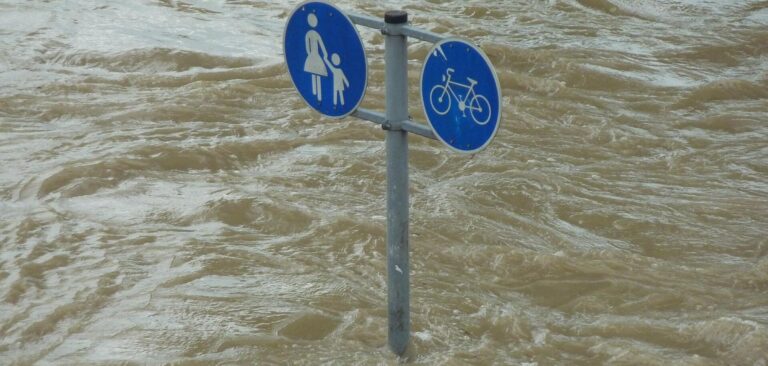Floods, earthquakes and storms caused overall losses of around US$65bn for the first half of 2022, much less than the US$105bn for the same period the previous year, finds insurance specialist Munich Re. At around US$34bn, insured losses were roughly in line with previous years.
Torsten Jeworrek, member of the board of management, Munich Re, said, “The natural disaster picture for the first half of 2022 is dominated by weather-related catastrophes. Extreme tornadoes in the US caused billions in damage, parts of eastern coastal Australia were submerged by floods, and southern Europe struggled with extreme heat, wildfires and drought. The recently published IPCC report warned of the need for insurers to adapt their loss models to adequately assess the changing risk. Loss prevention is a fundamental component in mitigating the economic effects of climate change. It is therefore extremely worrying that insurance penetration in developing and emerging nations is stagnating at well below 10%, and that even in industrial countries there is much room for improvement.”
Floods in Australia
During late summer/early autumn, eastern Australia experienced extreme rainfall and floods causing losses of US$6.6bn. Parts of Queensland and New South Wales saw record rainfall and flooding, with the last week in February being the wettest since 1900 and some areas recording their highest flood peaks since 1893. The provisional estimated cost to the insurance industry is currently at US$3.7bn.
US dominates the loss figures
With a figure around US$28bn, the USA accounted for almost half of overall losses in the first six months of 2022 and nearly two-thirds of insured losses, with a figure of US$19bn. A series of severe thunderstorms with tornadoes was the principal cause of these losses.
A single thunderstorm front that produced tornadoes in early April destroyed assets worth over US$3bn, three-quarters of which were insured. In the first half of the year, severe thunderstorms in the USA caused losses totaling US$22bn, with insured losses of US$17bn.
This year’s tropical storm season is expected to bring above-average storm activity in the North Atlantic due to the El Niño-Southern Oscillation (ENSO) natural climate phenomenon in the Pacific.
Munich Re said it expects to see 18 (±3) named tropical storms, eight (±2) hurricanes and four (±2) severe hurricanes. Forecast models of external research institutes expect storm activity to be toward the upper end of the scale. By the end of June, three tropical cyclones had formed in the North Atlantic, none of which reached hurricane strength.
The greatest humanitarian tragedy was caused by a powerful earthquake in Afghanistan. Approximately 1,200 people died when the quake, with a magnitude of 5.9, devastated the eastern part of the country. Globally, some 4,300 people lost their lives in natural disasters in the first half of 2022.
Heat, wildfire and drought in parts of Europe
In Europe, extreme heat and arid conditions in early summer led to water scarcity and wildfires, especially in Italy, Spain and Portugal. According to the insurer, it is often difficult to put an exact figure on losses from heat and drought as their effects, such as production losses in industry due to a lack of cooling water, take time to emerge.
Winter storms, particularly in February, swept across north and northwest Europe bringing hurricane-force winds in places. Ireland, England, parts of Belgium, the Netherlands, northern Germany and the Baltic coast were hit especially hard, with overall losses of US$5.2bn.
Summing up this year’s weather catastrophes to date, Ernst Rauch, chief climate scientist at Munich Re, said, “They may all be individual events with different causes, but taken together, one thing is becoming extremely clear: the powerful influence of climate change is becoming ever more evident. And the consequences for people across the world are becoming ever more palpable. The IPCC has made an even clearer diagnosis, stating that weather-related disasters such as heatwaves, torrential rainfall or droughts on a warmer Earth will increase in both frequency and intensity. Heatwaves will tend to last longer and bring more extreme temperatures. This will differ from region to region – in Europe it will be the south that is hit hardest.”



